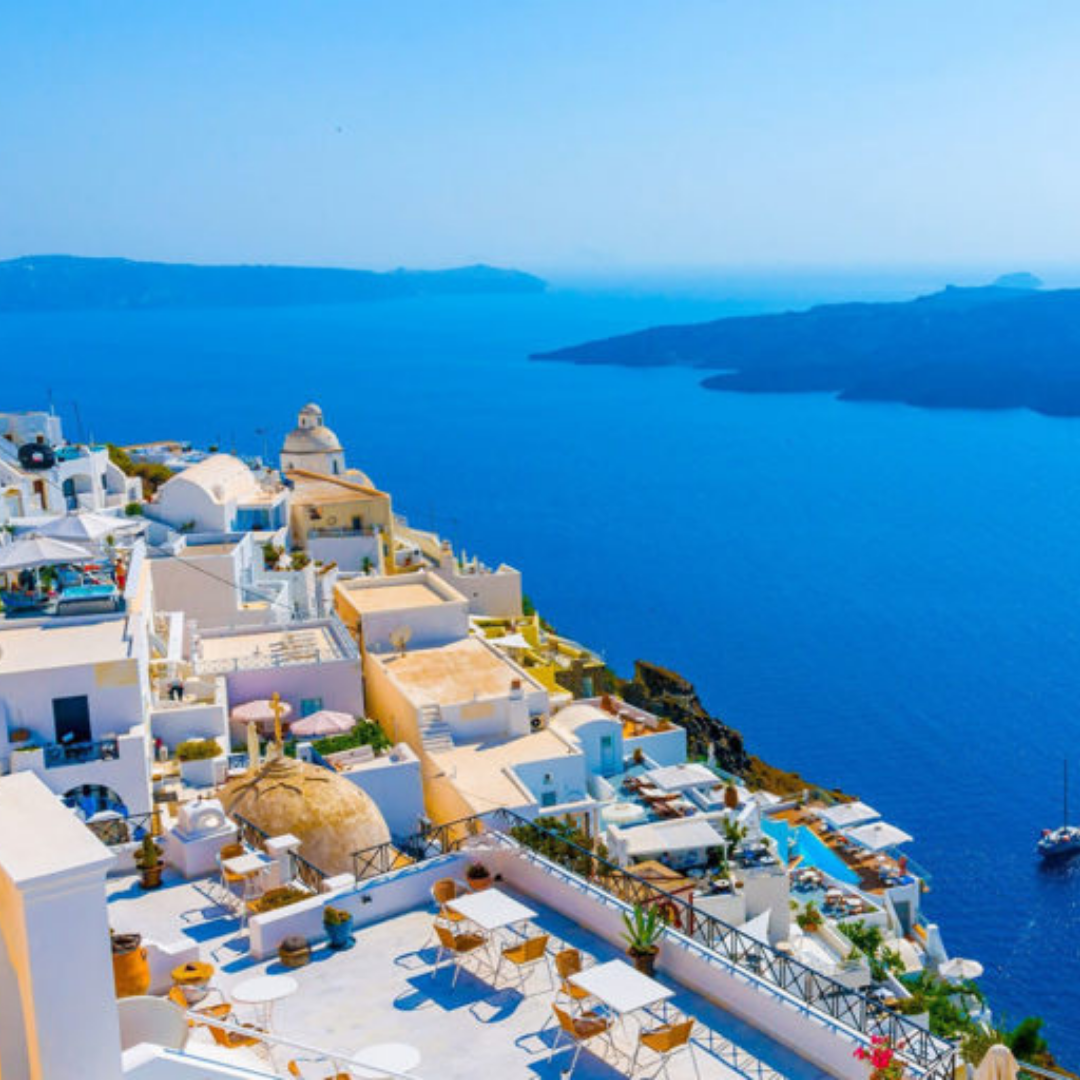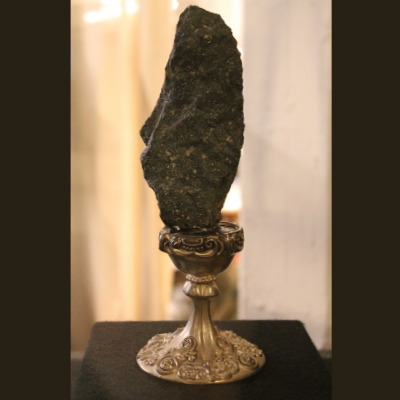Quick History: The Thera Eruption
February 12, 2021

You may recognize this vibrant view off the coast of the Santorini Islands in Greece from a 1000-piece jigsaw puzzle, computer desktop display, or even a friend’s Instagram travels. Peering into this scene of bliss and tranquility, you may be surprised to learn that thousands of years ago, these same islands experienced a devastating volcanic eruption 100 times more powerful than that of Pompeii — the Thera Eruption.
Let’s set the scene.
 In c. 1500 B.C., the island, known then as Thera, was home to members of the Minoan civilization. The years of 3000 B.C. - 1100 B.C. marked the Bronze Age, a time when civilization flourished with new technology and set the trend for using bronze. To this day, the land holds proof of the Minoan civilization’s advancements when it came to building complexes, tools, artwork, writing methods, trade networks, and even elaborate plumbing systems.
In c. 1500 B.C., the island, known then as Thera, was home to members of the Minoan civilization. The years of 3000 B.C. - 1100 B.C. marked the Bronze Age, a time when civilization flourished with new technology and set the trend for using bronze. To this day, the land holds proof of the Minoan civilization’s advancements when it came to building complexes, tools, artwork, writing methods, trade networks, and even elaborate plumbing systems.
The main hub of the land — a city which was later named “Knossos” by British archaeologist Sir Arthur Evans — held immaculately built palaces which were believed to host ceremonial and political events at the time. The Minoan people’s innovations were evidence that their civilization was on an incline, surpassing their previous age’s milestones left and right. However, bigger matters soon took to the main stage, violently and without much warning.
(Photo: Present-day remains of the Palace of Knossos, located in the ruined Minoan city of Knossos.)
 It’s possible that some inhabitants of the island suspected the long-dormant volcano’s eruption to come and evacuated on time. But for those who did not survive the unleashed lava, rock, and ash, there’s no doubt that the aftermath upended the Minoan civilizations and beyond. The volcano’s wrath — in tandem with the earthquakes and tsunamis that followed — shattered the major city of Knossos and damaged other settlements, like Akrotiri (which has since been excavated - see photo below).
It’s possible that some inhabitants of the island suspected the long-dormant volcano’s eruption to come and evacuated on time. But for those who did not survive the unleashed lava, rock, and ash, there’s no doubt that the aftermath upended the Minoan civilizations and beyond. The volcano’s wrath — in tandem with the earthquakes and tsunamis that followed — shattered the major city of Knossos and damaged other settlements, like Akrotiri (which has since been excavated - see photo below).
(Photo: The settlement of Akrotiri has been excavated since 1967, and regularly undergoes maintenance with the help of international volunteers.)
 Although there are no written records of the eruption from that time period, geologists think the Thera Eruption could be the strongest explosion ever witnessed, mirroring the energy of hundreds of atomic bombs in the fraction of a second. Proof of volcanic destruction was found over 800 miles away from Thera — across the Mediterranean Sea, all the way onto the lands of Egypt and Israel.
Although there are no written records of the eruption from that time period, geologists think the Thera Eruption could be the strongest explosion ever witnessed, mirroring the energy of hundreds of atomic bombs in the fraction of a second. Proof of volcanic destruction was found over 800 miles away from Thera — across the Mediterranean Sea, all the way onto the lands of Egypt and Israel.
(Photo: The Tempest Stele was erected by Egyptian pharaoh Ahmose I during the 18th Dynasty of Egypt, c. 1550 B.C.)

Some archaeologists even claim that the famous Egyptian artifact known as the Tempest Stele seems to depict the devastation of the volcano’s eruption. The ancient hieroglyphs on the block of calcite describe a great storm striking Egypt, destroying places of worship and pyramids in the Theban region.
Regardless of this artifact’s depictions, the Museum of World Treasures houses a souvenir of volcanic rock from the Thera Eruption of the 16th century B.C.
(Photo: Volcanic Rock from Thera Eruption, 16th century B.C., on display at the Museum of World Treasures in Wichita, Kansas.)

Interested in seeing this piece of history in person? Double check our hours by clicking here, then come visit when you can! We’d love to see you and point you in the direction of this noteworthy object on display.
---
Did you enjoy this “Quick History” post? Send us a suggestion for our next topic to marketing@worldtreasures.org.
Thanks for reading! Now go make some happy history.
